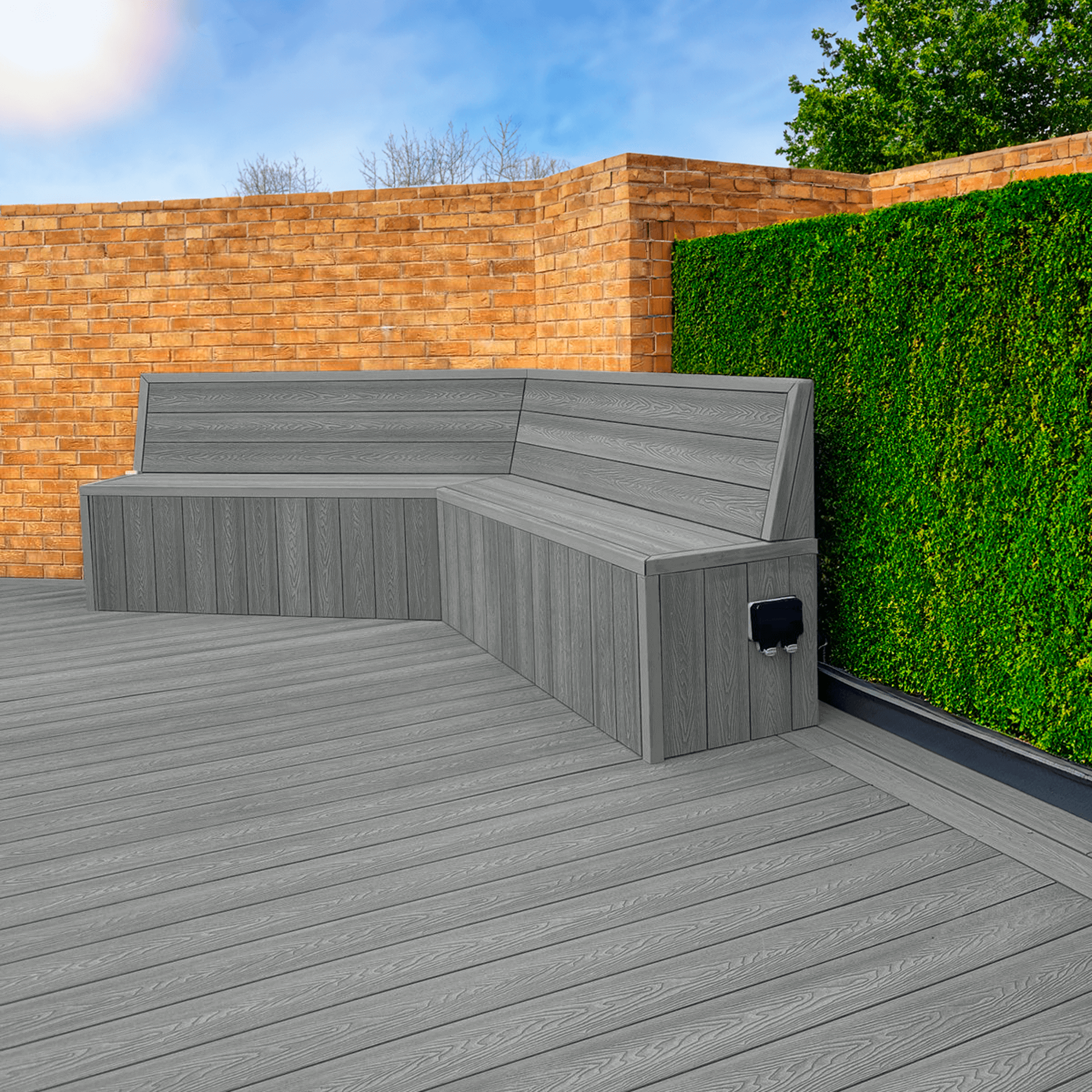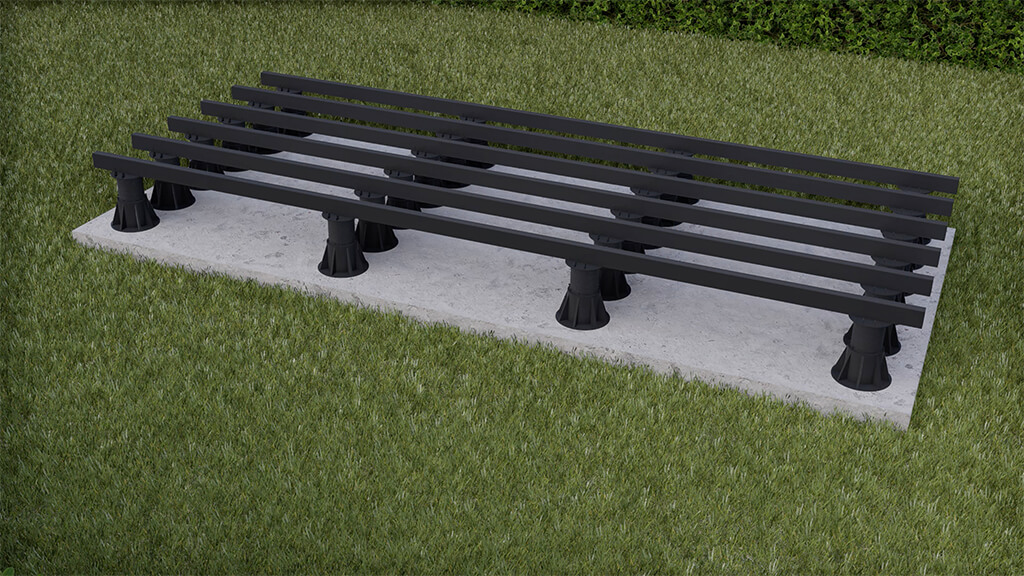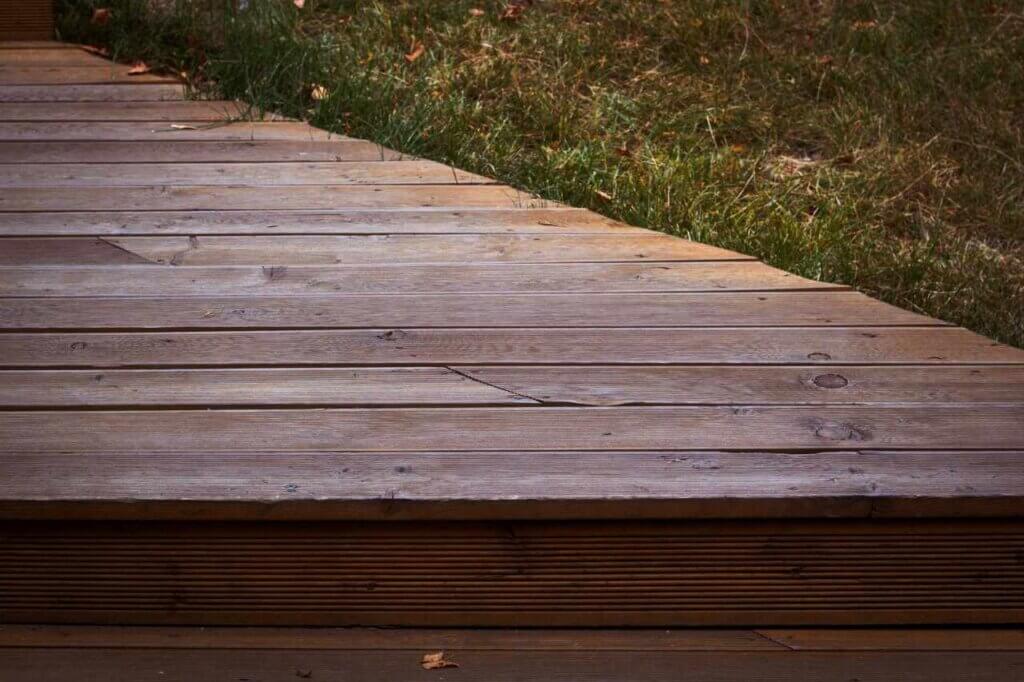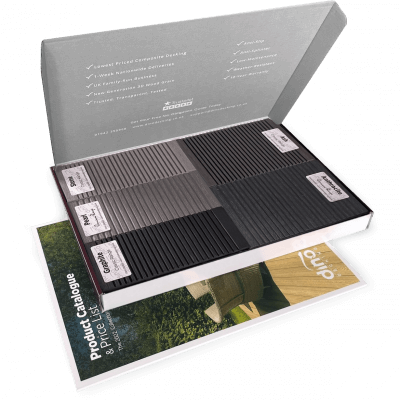5 Composite Decking Lighting Ideas
Our composite decking looks great in any setting, but you can really make your outdoor spaces shine with our decking
Products in Stock
Lowest Prices
Express Delivery
10-Year Warranty
Bank Holiday Weekend Sale. Up To 15% Off.

Ever wondered how to lay decking on soil? Or maybe you have a patch of grass in your garden that you keep imagining as a stunning outdoor living space. Laying decking directly on soil or grass might just be the answer you’re looking for. It’s a brilliant way to create a versatile area for relaxation, entertainment, or simply soaking up the British sunshine (when it decides to make an appearance, that is).
But before you dash off to buy some brand new composite decking, let’s walk through the process together to ensure your new deck stands the test of time – and the unpredictable UK weather!
Before we jump in, here’s a quick summary on how to lay decking on soil or grass.
It’s quite common for decking, composite or not, to be laid on either grass or soil. With specialised equipment such as aluminium joists, decking can be raised off the ground. However, laying decking on soil isn’t a simple procedure as there are several factors you must consider before you take on the job.

Before laying your decking on either soil or grass, spend time taking a look at your chosen site. Consider the following questions:is it level? Does it have good drainage? Are there any obstacles like tree roots or underground pipes? Answering these questions will save you a world of bother and are essential for ensuring problems don’t occur later on.
It’s important to have the correct tools before installing composite decking. You don’t want to make the mistake of installing your decking incorrectly as this can lead to a wobbly deck. The most essential tools you’ll need for efficient installation are:
Before laying the decking on soil, the ground needs to be prepared. Roll up your sleeves and get stuck in! Clear the area of any debris and things that are likely to affect the foundations. Then, level the ground as best you can. Remember, we’re aiming for a surface smoother than a well-ironed shirt.
Next, it’s time to start priming the ground for the decking frame. For more information, read our guide on how to lay decking on uneven ground.
Lay down a weed barrier to stop those pesky plants from poking through your lovely new deck. It’s like laying down the law for weeds – no entry allowed!
Spread a layer of gravel or sand over the weed barrier. This helps with drainage and provides a stable base for your decking. Aim for about 50mm depth – roughly the height of a cricket ball.
Now for the skeleton of your deck. This is where things start to take shape!

Lay your composite joists on the gravel or sand base. These are the sturdy beams that will support your decking boards. For guidance on optimal spacing, our decking frame spacing guide has everything you need to know.
Keep your joists evenly spaced. Think of it like lining up soldiers on parade – neat and orderly is the way to go.
At last, the moment we’ve all been waiting for – laying the actual decking boards!
Cutting and laying your decking boards can be a difficult job, but just remember to measure twice, cut once – that’s the golden rule. Lay your boards perpendicular to the joists, leaving a small gap between each for expansion. After all, even wood needs room to breathe in our changeable climate.
Screw or nail the boards to the joists. This is the most important step – you don’t want any boards coming loose or letting in unwanted dirt and debris. This can cause issues further down the line such as mould, rot and splitting, so make sure to always secure decking boards fully.
Before your composite decking can be enjoyed, there are a couple more important bits to carry out to make sure everything is in tip-top shape.
Give your deck a once-over with sandpaper to smooth out any rough edges. It’s like giving your deck a nice manicure – it deserves to look its best!
Start by sweeping off any sawdust and debris. A clean deck is a happy deck, ready for its first outdoor soirée. Remember to clean your decking in the future using a specialised cleaner designed for composite decking. This ensures it remains fresh for years to come.

Even the best-laid plans you can have problems with composite decking. Here’s how to tackle some common hiccups:
If your ground is bumpy, consider using adjustable pedestal supports to level things out. These create a raised decking foundation, allowing your boards to lay much more evenly.
In areas with clay soil, your deck might shift over time. Using concrete pads under your joists can help keep everything steady as a rock.
Poor drainage can lead to a waterlogged deck, something that can cause mould, rot and other unpleasant issues. Ensure your deck slopes slightly away from your house to encourage water runoff.
And there you have it – your very own guide to laying decking on soil. With a bit of elbow grease and attention to detail, you’ll soon be the proud owner of a stunning outdoor space. Perfect for those balmy summer evenings (fingers crossed for good weather!).
If you’re feeling inspired but not quite ready to tackle this project solo, why not consider our professional installation services? And if you’re in the market for top-notch materials, our composite decking offers fantastic options that are durable, low-maintenance, and perfect for the British climate.

Our sample pack contains a sample piece of each colour currently available. Order your free sample pack today to compare the colours and get a true feeling of the Dino Decking range!
Our composite decking looks great in any setting, but you can really make your outdoor spaces shine with our decking
If the idea of having rats under your decking makes you shiver, don’t worry. We’ll let you know the signs
Business hours
Monday: 09:00 – 17:30
Tuesday: 09:00 – 17:30
Wednesday: 09:00 – 17:30
Thursday: 09:00 – 17:30
Friday: 09:00 – 17:30
Saturday: Closed
Sunday: Closed
Contact us
01942 355968
support@dino.co.uk
Collection Address: Unit 1 Wetheral Close Hindley Ind Estate Wigan Greater Manchester North West WN2 4HS
Pages
Products
Testing
Copyright 2025 Dino Decking Ltd All Rights Reserved.
VAT Number: GB296097848.
Company Number: 10837233.